Mask Generators panel
The Mask Generators panel is a feature that provides several methods for automatic mask generation. It allows users to generate masks automatically based on specific criteria or algorithms. These masks can then be used for various purposes, such as segmentation or selecting specific areas of interest (see more about masks)
Back to Index --> User Guide --> Panels
Contents
-
Common fields -
Frangi Filter -
Morphological filters -
Strel Filter
Common fields
There are several common fields that do not depend on type of the selected mask generator.
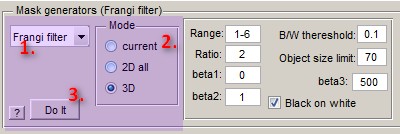
- 1. The Filter type ▼, allows to select one of the possible mask generators
- 2. The ◉ Mode radio buttons:
- ◉ current, this mode generates a mask specifically for the currently shown slice. It focuses on the selected slice and creates a mask based on the criteria or algorithm chosen
- ◉ 2D all, in this mode, the mask is generated for the whole dataset using the 2D approach. It generates masks slice by slice, considering each slice individually
- ◉ 3D, this mode generates a mask for the entire dataset using the 3D approach. It takes into account the entire volume of the dataset to create a comprehensive mask
3. The Do it button:
- the left mouse click, on the button starts the selected generator. The existing mask will be deleted
- right mouse click + Do new mask, starts the selected generator. The existing mask will be deleted

- right mouse click + Generate new mask and add it to the existing mask, the generated mask will be added to the existing mask.
This option may be used for multi-dimensional filtering:
- run Generator for XY
- Change dimension by pressing |'XZ'| or |'YZ'| button in the Toolbar
- Run Generator again with the |Generate new mask and add it to the existing mask| option
Frangi Filter
Hessian based Frangi Vesselness filter, written by Marc Schrijver and Dirk-Jan Kroon. This function uses the eigenvectors of the Hessian to compute the likeliness of an image region to contain vessels or other image ridges, according to the method described by Frangi 1998, 2001.
Note, to work properly this function should be compiled. See details in System Requirements
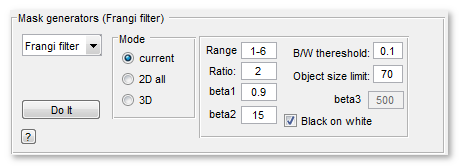
Parameters:
- Range, the range of sigmas used, default [1-6]
- Ratio, step size between sigmas, default [2]
- beta1, the Frangi correction constant, default [0.9]
- beta2, the Frangi correction constant, default [15]
- beta3, the Frangi vesselness constant which gives the threshold between eigenvalues of noise and vessel structure. A thumb rule is dividing the the greyvalues of the vessels by 4 till 6, default [500];
-
B/W threshold, defines thresholding parameter for generation of the
Masklayer. When set to 0 results in the filtered instead of binary image. - Object size limit, after the run of the Frangi filter removes all 2D objects that are smaller than this value.
- [✓] Black on white checkbox, if checked, detects black ridges on white background.
Morphological filters
Set of MATLAB based morphological filters.
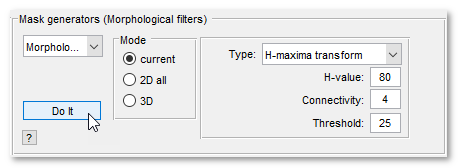
-
Extended-maxima transform - based on
imextendedmaxfunction of MATLAB. Computes the extended-maxima transform, which is the regional maxima of the H-maxima transform. Regional maxima are connected components of pixels with a constant intensity value, and whose external boundary pixels all have a lower value.
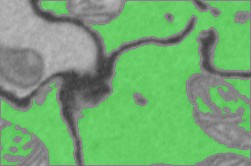
-
Extended-minima transform - based on
imextendedminfunction of MATLAB. Computes the extended-minima transform, which is the regional minima of the H-minima transform. Regional minima are connected components of pixels with a constant intensity value, and whose external boundary pixels all have a higher value.

-
H-maxima transform - suppresses all maxima in the intensity image whose height is less than H-value. Regional maxima are connected components of pixels with a constant intensity value, and whose external boundary pixels all have a lower value. The resulting image is then thresholded using the provided
Thresholdvalue.
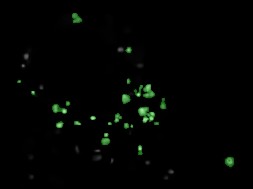
-
H-minima transform - suppresses all minima in the grayscale image whose depth is less than H-value. Regional minima are connected components of pixels with a constant intensity value (t) whose external boundary pixels all have a value greater than t. The resulting image is then thresholded using the provided
Thresholdvalue.
-
Regional maxima - based on
imregionalmaxfunction of MATLAB. Returns the binary mask that identifies the locations of the regional maxima in the image. In mask, pixels that are set to 1 identify regional maxima; all other pixels are set to 0. Regional maxima are connected components of pixels with a constant intensity value, and whose external boundary pixels all have a lower value.
-
Regional minima - based on
imregionalminfunction of MATLAB. The output binary mask has value 1 corresponding to the pixels of the image that belong to regional minima and 0 otherwise. Regional minima are connected components of pixels with a constant intensity value, and whose external boundary pixels all have a higher value.
Strel Filter
Generate mask based on morphological image opening and black-and-white thresholding. The function first performs morphological bottom-hat ([✓] Black on white is checked) or top-hat ([✓] Black on white is unchecked) filtering of the image. The top-hat filtering computes the morphological opening of the image (using imopen) and then subtracts the result from the original image. The result is then black and white thresholded with parameter in the B/W threshold edit box.

-
Strel size, defines size of the structural element (
disktype) forimtophatandimbothatfiltering. - The [✓] Fill checkbox, check it to fill holes in the resulted
Maskimage. - B/W threshold, specifies parameter for the black and white thresholding.
-
Size limit, limits the size of generated 2D objects so that objects smaller than this value are removed from the
Maskduring the filter run. - The [✓] Black on white checkbox, when checked, the filter will use morphological bottom-hat filtering (
imbothat). When unchecked - morphological top-hat filtering (imtophat).
Back to Index --> User Guide --> Panels